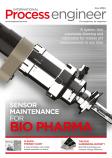An expert look at how flexible batch-control software compares with state-based alternatives.
When the International Society of Automation first published its ANSI/ISA88 standards in 1995, the goal was to provide processors with standards and recommended practices as appropriate for the design and specification of batch control systems. This spurred the development and release of S88-based software solutions designed to simplify the process of implementing and modifying recipe procedures without complex software programming.
Impact of the s88 software standards
The goal of the software was to allow recipe creators or operators to modify recipe parameters, procedures, production schedules, batch start rules, or to scale batch amounts more easily and at any time. The S88 standard also served to effectively separate the role of the control engineer (for programming) and recipe developers at the plant. “For years, if you were responsible for creating recipes in a plant, you had to also know how to program the control system,” explains Bob Ard, senior advisor at leading global developer and supplier of process technologies, automation, and services for process industries Valmet.
Ard says that now, with flexible batch control software, all programming is completed ahead of time and only for the lowest level of control tasks, such as opening and closing valves, increasing temperature, pH control, adding materials, etc. The result is a safer, more intuitive process that reduces the amount of programming, simplifies the implementation and modification of new recipes, and ensures batch cycles are more consistently executed with the proper timing and procedure.
Automating batch processes
According to Ard, the two primary automation methods used by Valmet are state-based control and S88 control using Phase logic and FlexBatch, the company’s proprietary software.
State-based control generally works best for continuous processes, while FlexBatch is preferred for batch processes. Ard says the general rule of thumb is to use flexible batch control for recipe-driven units and state-based control for all others.
Growing demand for flexible batch software
Today, Ard says most processors expect an S88 flexible batch control software solution and will go elsewhere if one is unavailable.
This was even cited as a key factor in the decision by Valmet to acquire NovaTech Automation’s Process Division – the original developer of FlexBatch – in January of 2023.
Ard concludes: “Decades of experience have proven that a FlexBatch implementation requires up to 30% less programming.. He continues: “At this point, there really are no disadvantages of using FlexBatch for batch control."


















